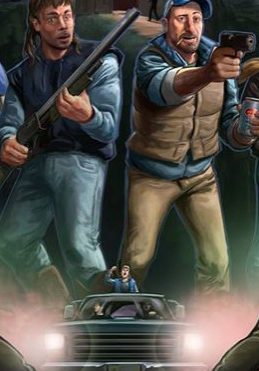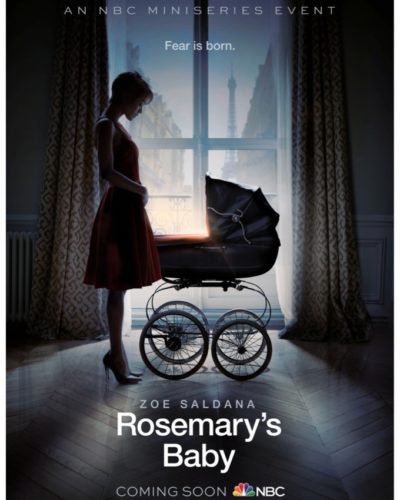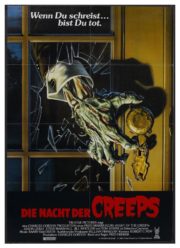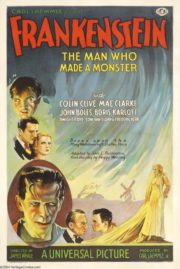Into the Wilderness of Terror
“Sometimes, it’s not about what you can see; it’s about what you can’t.” This haunting line captures the essence of “Bigfoot: The Movie,” directed by the talented L.C. Holt and released in 2015. Set against the backdrop of a remote wilderness, the film dives deep into the lore surrounding one of the most enigmatic creatures in American folklore. A mix of found footage and traditional narrative, the film follows a group of friends who embark on a camping trip, only to find their lives transformed into a harrowing fight for survival against the legendary beast. For those unacquainted with Bigfoot legends, the film offers a chilling entry into the unknown while leaving the audiences questioning what lies beyond the tree line.
Crafting an Eerie Atmosphere
“Bigfoot: The Movie” excels in creating an atmosphere steeped in horror, primarily through suspense and a pervasive sense of foreboding. The film masterfully builds tension not merely with jump scares or shocking visuals but instead through a slow, growing dread that is palpable throughout. As the characters navigate their serene camping experience, the background score subtly hints at impending doom, preparing the viewer for what is to come. The filmmakers establish an unnerving silence that frequently punctuates the characters’ dialogues, suggesting that danger lurks just beyond their awareness.
The effective use of isolation enhances the sense of horror. The vast, dark woods become a character in their own right, evoking feelings of vulnerability and fear. The absence of civilization and the uncertainty of the wilderness amplify the terror as the friends slowly come to grips with the idea that they may not be alone. The gradual buildup of unsettling incidents—a cracked branch, a rustle in the bushes—culminates in significant moments that push the audience into the depths of anxiety and anticipation.
Overall, the film’s atmospheric choice is not about launching into graphic horror; it’s an exploration of the psychological landscape—what happens when the comfort of nature transforms into an unpredictable entity? This unique approach to horror provides authenticity and draws the audience deeper into its narrative.
Visual Storytelling: A Daring Approach
L.C. Holt’s direction blends different cinematic styles, particularly the use of handheld camera techniques reminiscent of found-footage films, creating authenticity and a rawness that enhances the dread. The lighting plays a crucial role too—a stark contrast between bright daylight scenes and the enveloping dark at night captures the duality of comfort and fear. Occasional close-ups of the characters’ anxious faces reveal their vulnerability, while wide shots of the sprawling forest amplify their insignificance in the face of an uncontrollable power.
The color palette is subdued, dominated by browns, greens, and grays associated with nature. These choices result in a muted aesthetic that further emphasizes a sense of reality, stripping away any glamor usually found in horror films. As the daylight fades, the forest transforms into a menacing place teeming with possibilities of horror.
Unique visual techniques, such as the use of rapid cuts during moments of fear, contribute to the audience’s anxiety. The strategic placement of shadows and angles craft distortions that keep the viewer uncertain of what truly lurks in the darkness. The balance of suspense and shock within the visuals mediates a powerful connection between the audience and the unfolding chaos.
The Sonic Landscape of Fear
The film’s sound design is central to its horror elements. The absence of traditional horror cues intensifies the viewer’s engagement, demanding they pay attention to subtle sound clues. In crucial moments, silence is deafening, creating an unbearable tension that forces the audience to sit on the edge of their seats. When sounds do occur—be it twigs snapping or howls in the distance—they rupture the quiet, unsettling the characters and audience alike.
The soundtrack, while minimalistic, is punctuated by ominous resonances reminiscent of natural environments, often blending with the ambient sounds of the forest. This creates a chilling layer that reminds viewers of both the beauty and danger inherent in untamed wilderness. The sonic landscape enhances feelings of isolation; the roaring winds and distant animal calls become a haunting reminder that they are being watched.
Certain moments utilize unexpected sounds, such as an agonized cry or the rustle of movement, used at strategic junctures to startle both the characters and the audience. The effectiveness of sound lies in its ability to suggest what isn’t shown, leading viewers to visualize their fears rather than be shown outright horror.
Performances: Authenticity in Fear
The cast delivers commendable performances that add depth and realism to their characters. Each actor embodies well-defined roles, from the courageous leader to the vulnerable skeptic, creating a believable dynamic that resonates throughout the film. Their reactions to escalating fear remain grounded and relatable, allowing the audience to invest in their fates.
The chemistry among the characters further enriches the storytelling. Their camaraderie evokes nostalgia for simpler times while juxtaposing the impending threat of the beast. The moments of light-hearted banter serve not just as comic relief but as a poignant reminder of what’s at stake, amplifying the tragedy when horror strikes.
However, some character portrayals lean heavily on stereotypes that may detract from the overall impact. A couple of characters devolve into clichéd roles that don’t fully utilize the actors’ skills. While this serves to heighten tension, it can also detract from the authenticity of their relationships, occasionally making them difficult to empathize with during dire moments.
Delving into the Horror Mechanisms
“Bigfoot: The Movie” manages to blend multiple horror elements, mainly psychological and supernatural horror. The psychological fear arises from the characters’ mindsets as they confront the reality of a creature they thought were mere legends. Their descent into terror reflects how fear often stems from the unknown—what might be lurking just beyond the darkness.
The supernatural element is vividly fleshed out through the lore and folk tales illustrated throughout the film. By integrating folklore, the film challenges conventional horror films where urban settings or modern themes dominate, recalling the primal fears rooted in humanity’s relationship with nature. The film resonates with viewers who appreciate a deep dive into psychological constructs while evoking supernatural dread.
The execution of horror mechanics oscillates between slow-burn tension and sudden shocks. The filmmakers capitalize on the idea of expectation—what the audience anticipates happening versus what unfolds can be more captivating than overt displays of gore. The chilling moment when something catches the character’s eye, accompanied by sudden darkness or movement, is carefully crafted, ensuring that viewers are both surprised and terrified.
Symbolism within Horror Itself
Beyond the breadcrumbs of horror, “Bigfoot: The Movie” contains underlying themes of human vulnerability and the stark divide between civilization and nature. It comments on how easily individuals can be stripped of their modern comforts and plunged into a primal struggle for survival. There’s a haunting parallel within the film, suggesting that the truths we seek often lie cloaked in shadows, waiting patiently for the curious.
Moreover, the film offers reflections on human folly—the ignorance of dismissing folklore and warnings, echoing real-life instances where humanity disregards nature. The tension results not just from the creature but from the group’s initial hubris, reminding viewers of the unpredictability of the natural world.
Such depth adds weight to the terror, turning it into a vessel for societal commentary, rather than merely an exercise in fear. The monsters we create in our imaginations often mirror the fears we ignore in the real world, enhancing the film’s overall commentary.
A Fight or Flight Encounter
In evaluating the film’s effectiveness as a horror experience, “Bigfoot: The Movie” stands out for its psychological depth and eerie atmosphere. While it may not deliver relentless scares or gore, it thrives on creating long-lasting tension and fear that lingers even after viewing. The unique blend of folklore, relatable character dynamics, and stunning visuals solidifies it as a thoughtful exploration of horror.
For those who enjoy horror that prioritizes atmosphere and suspense over jump scares and graphic content, this film is bound to be a satisfying experience. It appeals not only to enthusiasts of the genre but also to newcomers who appreciate subtle storytelling intertwined with horror.
Comparatively, “Bigfoot: The Movie” stands as an intriguing piece within the canon of creature horror. It channels the energy of classics while also utilizing contemporary filming techniques, offering a breath of fresh air in a genre often reliant on formulaic approaches. It invites viewers to reconsider what scares them—reminding them that often, terror resides in the unseeable.
Final Thoughts: An Engaging Journey into Fear
Overall, “Bigfoot: The Movie” presents strengths in evoking tension through atmosphere, sound, and character authenticity. The film’s unique narrative juxtaposes the folkloric roots of horror with modern-day fears, contributing to its effectiveness. While some character development may falter into clichés, the overall impact is a chilling journey into the unknown—a reminder that not every monster can be seen.
Recommended for viewers seeking depth in their horror experience—particularly those fascinated by folklore and psychological nuances—this film is sure to satisfy while provoking thought about humanity’s relationship with nature and the unknown.
That being said, potential viewers should be aware of graphic content and situational suspense that might resonate with personal fears. Ultimately, “Bigfoot: The Movie” is a daring journey that invites you to step into the shadows and embrace the terror waiting within.




